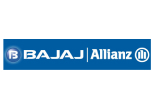How has ULIP changed over the years, in the context of India?
Table of Contents
A Unit Linked Insurance Plan (ULIP) is an insurance plan that provides a dual benefit. That is, it offers the benefit of investment to attain your long-term financial goals, as well as a life cover to financially protect you and your loved ones in the case of an unforeseen event. Broadly, the premium paid towards a ULIP is divided into two parts. One part is used to contribute towards your life cover and the remaining is invested in a fund of your choice.
As a customer, investing in ULIPs provide you with the ability to choose your investment. Be it equity, debt, or a combination of both. This provides you some degree of flexibility as different customers tend to have different risk appetites and goals. The returns from your plan will be subject to the performance of the type of investment chosen by you. Hence as an investor, you get the freedom of choice when it comes to the type of fund.

The Birth Of Ulips In The Indian Market
Unit Trust of India (UTI) introduced ULIPs in the 1970s. It was brought forth as a financial product with monetary returns & guaranteed coverage. However, over time it was seen that it faced numerous challenges in the market. Lack of transparency, additional charges, and hefty upfront costs to name a few. Due to this, the policyholders grew highly dissatisfied with the product.
This dissatisfaction was further fueled by the knowledge that a major chunk of premiums paid by the policyholders had been used primarily for the payment of commissions. Which meant that only a small portion went into their net asset value. This caused a decline in the interest shown towards ULIPs in the market resulting in its further downfall. Furthermore, reports of miscommunication and duping regarding the investment period were common.
The Second Phase of ULIPs in India
With the foundation of the Insurance Regulatory and Development Authority (IRDAI) in 1999, there were changes made in the interest of all stakeholders. That is, IRDAI became aware of certain dangers and realized the necessity to implement laws critical to safeguarding the interests of the policyholders. The intent of the changes was to ensure customers were well informed about their ULIP interests and that it was a long-term investment.
For the first ten years of ownership, IRDAI reimbursed the yearly costs of ULIPS at the rate of 2.25% and increased the lock-in period to five years. The charges were established keeping in mind the common expenditure incurred by competing products. In addition to this, the base cover was increased to make sure that an appropriate safeguard was placed to help cover the financial supporter’s monetary interests.
The Third Generation of ULIPs
By the year 2015, many of the ULIPs followed a similar pattern. That is a low dispatch cost of the ULIP. With the adoption of the internet, concerns regarding information transparency and other consumer concerns were being addressed. With the launch of applications like HDFC Life: Click2Invest, the design of both arrangements of organizations providing these instruments and the strategy associated with the allotment of costs underwent a major shift.
Furthermore, expenditures associated with mortality charges and asset executive fees were capped. This made the product more appealing to the audience.
Key Takeaways & the Road Ahead
Despite their rocky start, ULIPs today are widely popular as they yield high returns in the long run. In fact, products available in the market today are now being structured to be increasingly cost-effective. With the investors in today’s world having information at the tip of their fingers, it becomes important for the providers today to be efficient in the areas of cost management and generating good returns.
Although past records of ULIPs may not be glamorous, given various web-based ULIPs, you could consider weighing your options at the click of your mouse. Furthermore, insurance firms regularly release their factsheets, with the intent to be increasingly transparent & convey details pertaining to their portfolios and charges.
One of the major advantages of ULIP is that the returns are tax-exempt under the Income Tax Act. However, it comes down to the government regulations on how long these tax exemptions are to remain. All in All, investing in ULIPs comes down to factors like your personal preference, financial goals, and risk-taking appetite. It would be important for you to gather key information pertaining to your investments, be it stocks, Mutual funds, or in this case Unit Linked Insurance Plans.
Also Read: ULIPs' 5 Advantages That Make Them a Good Investment Option



























































